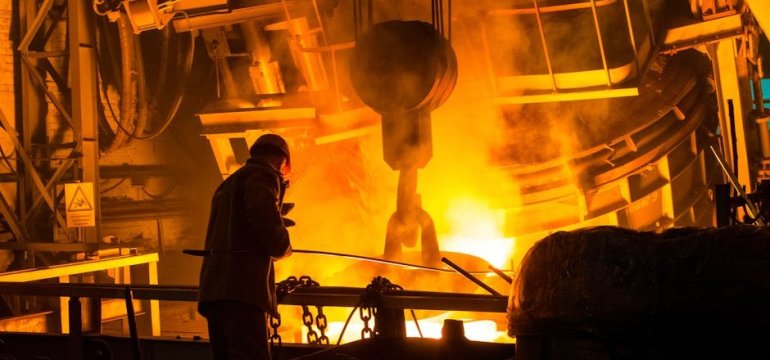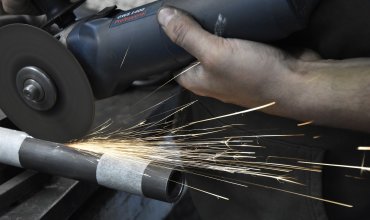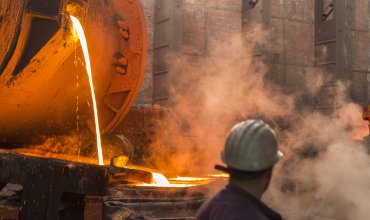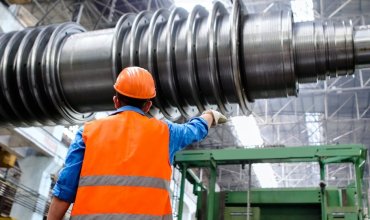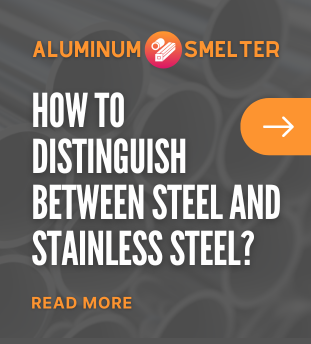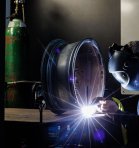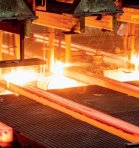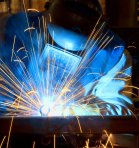Metal foundry is one of the key points in the production chain of many industries. The process of metal casting is incredibly old and has developed over millennia to reach today's level of technological sophistication. The activities of these facilities are essential for the automotive, aerospace and construction industries, as well as for the production of various appliances and everyday tools.
In this article, we will discuss in detail how a metal foundry works in the Polish context. We will describe what stages make up the entire process, what technologies are used and what challenges modern foundries face. Our goal is to provide readers with a comprehensive overview of this fascinating world, which, although it often operates far from the eyes of consumers, plays a key role in everyday life.
History and development of foundry technology
The process of metal casting has its roots in antiquity. The earliest finds of metal objects date back 6,000 years. Ancient Egyptians, Greeks and Romans used casting to create both everyday objects and works of art.
In Poland, the first records of metal foundries date back to the Middle Ages. At that time, mainly weapons and tools were produced. As time passed, technology developed, and in the 18th and 19th centuries the first modern foundry factories began to be established on Polish soil.
Technology in this industry has changed significantly over the centuries. Today, foundries use advanced computer techniques to help in the design of castings, optimizing the production process and minimizing raw material losses.
Basic raw materials and their properties
Before going into a detailed description of the process, it is worth taking a moment to discuss the basic raw materials used in metal casting. The most commonly used metals are iron, steel, aluminum, copper and their alloys. The properties of each affect the ways they are processed and their end uses.
Iron and steel
Iron and its alloys, such as steel, are the primary foundry materials. Iron is characterized by high mechanical strength and good thermal conductivity. Steel, due to its carbon and other alloying additives, offers diverse properties ranging from high hardness to flexibility.
Aluminum
Aluminum is a lightweight but strong metal. It is characterized by high corrosion resistance and good electrical and thermal conductivity. It is often used in the automotive and aerospace industries.
Copper
Copper and its alloys, such as brasses and bronzes, are prized for their excellent electrical and thermal conductivity. Copper also has good anti-corrosion properties, which makes it used in the electronics and construction industries.
The technological process of a metal foundry
The metal casting process is complex and consists of several steps that must be precisely coordinated to achieve the desired end product. Let's take a look at how the various steps in a metal casting plant work.
Designing the casting
The first stage is designing the casting. Nowadays, this process is mainly done using advanced CAD (Computer-Aided Design) programs. The design of the casting must take into account the physical and chemical properties of the material, as well as the requirements of the final product.
Preparation of the mold
The mold in which the metal will be cast can be made of sand, gypsum, metal or special resins. There are several methods of mold preparation, among which the most popular are the sand method and the precision method (lost wax casting).
Sand method: The mold is made of so-called molding compound, which is a mixture of quartz sand and a binder (usually clay). This is the oldest and most widely used method due to its simplicity and low cost.
Precision method: Also known as the lost wax method. A mold is made using wax models, which are then covered with a ceramic coating. After the wax is melted in a furnace, a cavity is created and filled with metal.
Melting the metal
The next step is melting the metal. The metal is first carefully weighed and then heated to a temperature above its melting point in special casting furnaces, such as induction, arc or converter furnaces. This process requires constant control to avoid overheating the metal, which could affect its mechanical properties.
Pouring the metal
The molten metal is then poured into a prepared mold. This process must be carried out precisely to avoid the formation of air bubbles and other internal defects. Depending on the type of metal and the expected quality of the casting, different pouring techniques are used, such as gravity or pressure pouring.
Cooling and knockout
The cast metal must then cool, which can take from a few minutes to several hours, depending on its properties and the size of the casting. Once cooled, the casting is knocked out of the mold. This process often requires the use of specialized machinery and tools, as the mold can be integrated into the casting.
Final processing
The final stage is post-treatment, which includes grinding, polishing and sometimes heat or chemical treatment. This gives the casting its final shape and mechanical properties. Depending on the application, the casting may additionally be painted or coated with various anti-corrosion coatings.
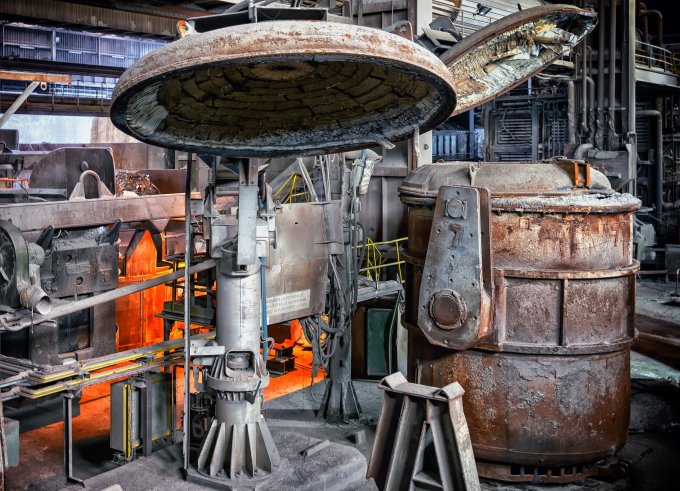
Modern technologies and innovations in metal casting
The development of technology in the 21st century has brought a number of innovations to the casting industry. These include new materials, as well as process technologies and analytical tools. The most important of these are listed below.
Computer-aided techniques
One of the most important steps was the introduction of computer-aided design and manufacturing (CAD/CAM) techniques. With these, it is possible to accurately design a casting and simulate it by computer before the actual start of the manufacturing process. This allows early detection of potential problems and optimization of the process.
3D printing
3D printing technology has revolutionized many industries, and metal foundry is no exception. Printing molds and cores from quartz sand with 3D printers makes it possible to create complex geometries that were previously impossible. In addition, 3D printing technology reduces production time and waste.
Application of robotization
The introduction of robots into casting processes has significantly increased the efficiency and precision of production. Robots are used for such tasks as metal pouring, machining and quality control. The use of robots contributes to minimizing human error and increasing work safety.
Composite materials
The development of composite materials is opening up new opportunities for the foundry industry. These materials consist of two or more components that together form a structure with improved mechanical, thermal or chemical properties. Examples include metal-ceramic composites, which combine the strength of metal with the abrasion and heat resistance of ceramics.
Intelligent production management systems
Modern foundries are increasingly using intelligent production management systems. These systems monitor every stage of production in real time, allowing them to quickly detect and eliminate problems. In addition, data analysis makes it possible to continuously improve production processes.
Ecological aspects and environmental challenges
A metal foundry is a place where large amounts of energy and raw materials are consumed, which has a significant impact on the environment. Today's foundries face a number of environmental challenges. These include issues related to emissions, energy consumption and recycling of raw materials.
Emissions of pollutants
The process of melting metals generates emissions of pollutants into the atmosphere. These are mainly carbon, nitrogen and sulfur oxides, as well as dust and heavy metals. To reduce these emissions, foundries are equipped with filtration and dust collection systems that capture and neutralize harmful substances.
Energy consumption
The production of castings is very energy-intensive, especially when melting metals. Modern technologies make it possible to significantly reduce energy consumption. Examples include induction furnaces, which are more energy efficient compared to traditional resistance furnaces. Foundries are also investing in renewable energy sources, such as solar panels and wind turbines, to reduce their dependence on fossil fuels.
Recycling
Metal recycling is a key element in a foundry's environmental strategy. Metal can be remelted many times without losing its properties, making it an ideal raw material for recycling. There are a number of programs that support metal recycling, both at the individual and industrial levels.
Waste management
Foundry processes also generate waste, such as used molding sand, metallurgical slag and residual alloys. Modern foundries are trying to minimize waste by recycling it and using technologies that reduce the amount of waste generated. For example, molding sand can be reclaimed and reused many times.
The future of metal casting in Poland
The metal casting market in Poland has many challenges, but also huge opportunities for development. Thanks to investments in modern technologies and the pursuit of sustainable development, Polish foundries have the opportunity to become world-class leaders in the industry.
Investments in research and development
One of the key success factors is investing in research and development (R&D). There are numerous research centers and technical universities in Poland that are working on new foundry technologies and materials. Cooperation between foundries and research centers contributes to faster market introduction of innovations.
Environmental awareness
The growing environmental awareness of society and industry is contributing to the introduction of more sustainable practices in foundries. New environmental regulations and standards are requiring plants to take steps to protect the environment. This is both a challenge and an opportunity to introduce modern, green technologies.
Globalization of the market
The foundry market is becoming increasingly globalized. Polish foundries have a chance to expand and conquer new foreign markets thanks to the high quality of their products and competitive prices. Also worth mentioning is the growing importance of exports, which contribute to the development of the industry and the country's economy.
Personnel challenges
One of the challenges facing the foundry industry is the provision of appropriately qualified personnel. Increasing demand for foundry professionals requires investment in education and training. Cooperation with technical universities and apprenticeship programs can help develop the skills of future employees.
Summary
Metal foundry is a complex and fascinating world full of advanced technologies, innovations and challenges. From ancient times to the present day, the process of metal casting has constantly evolved to reach today's level of technological advancement. In Poland, metal foundries play a key role in the industry, providing essential components for various industries.
The technological process in a foundry is complex and multi-stage, including casting design, mold preparation, metal melting, casting, cooling and post-processing. Thanks to modern technologies such as CAD/CAM, 3D printing, robotization and intelligent production management systems, the process is becoming more efficient.
Metal foundries also face environmental challenges. Emissions, energy consumption and recycling are issues that the industry is paying close attention to as it introduces technologies to reduce its environmental impact.
The future of metal casting in Poland looks promising. Investment in research and development, increasing environmental awareness, globalization of the market and the provision of qualified personnel are key factors that can contribute to the further development of the industry. Thanks to these activities, Polish foundries have a chance to become leaders on the international market, providing products of the highest quality in accordance with the principles of sustainable development.


